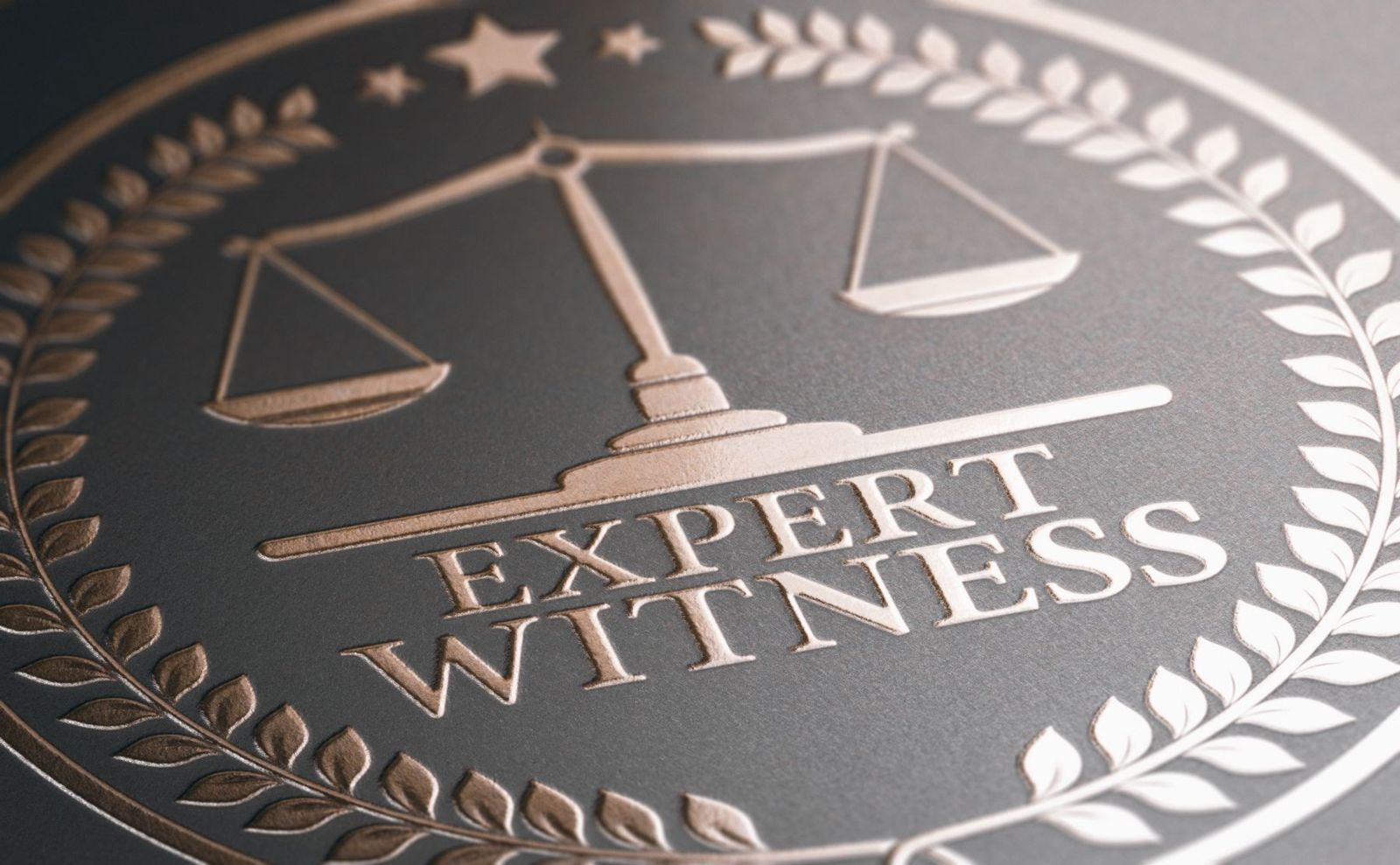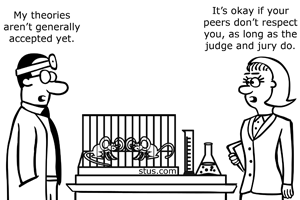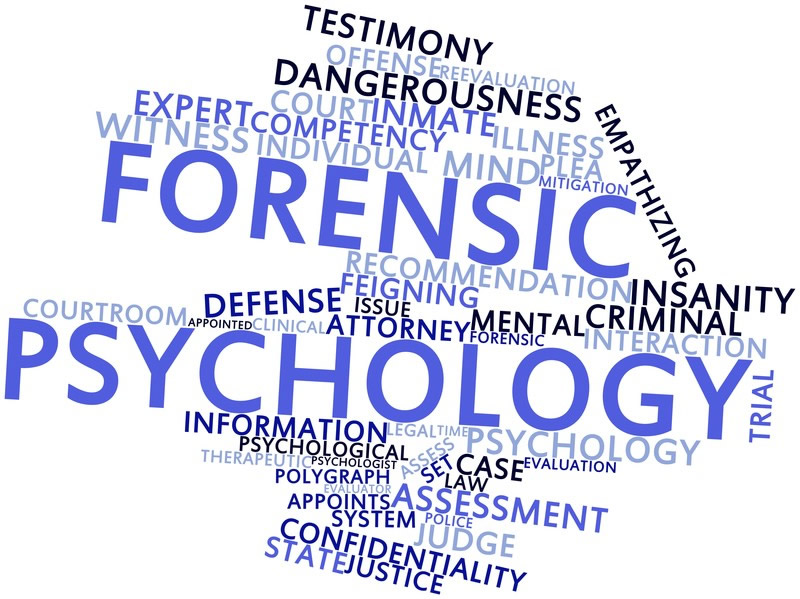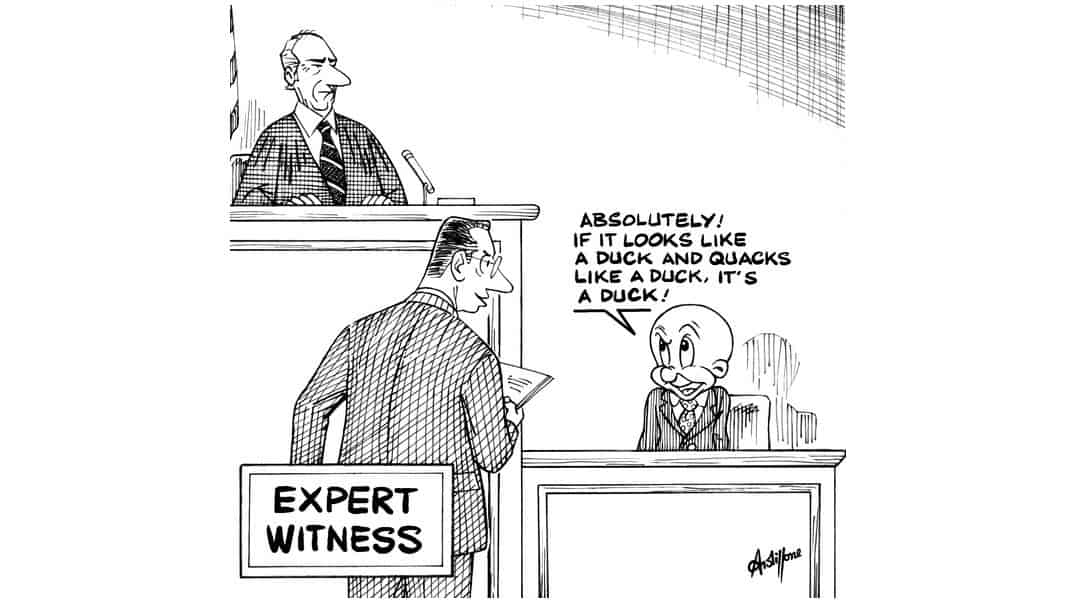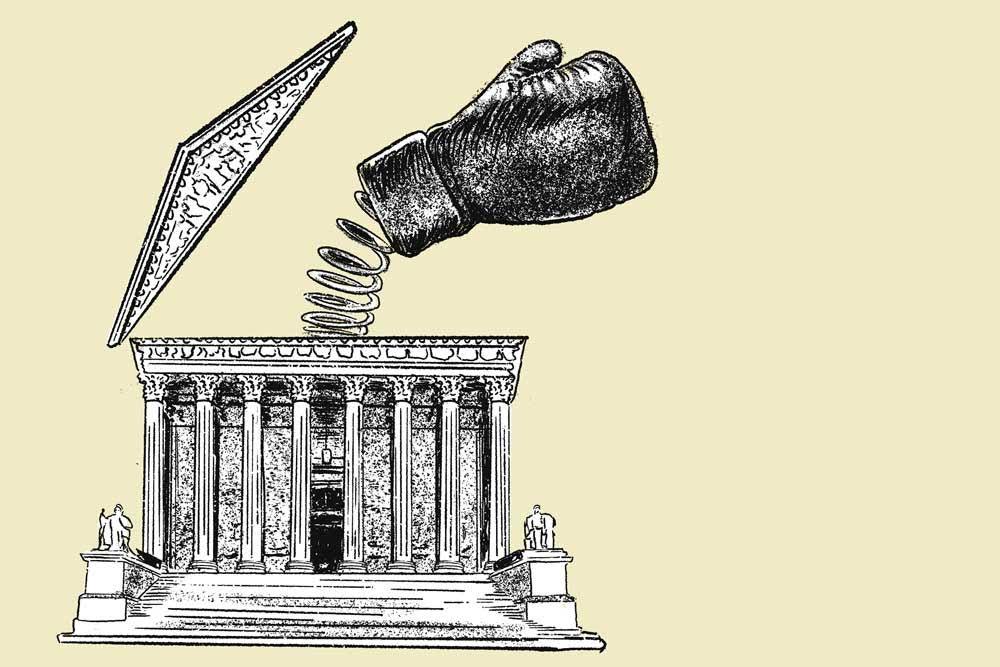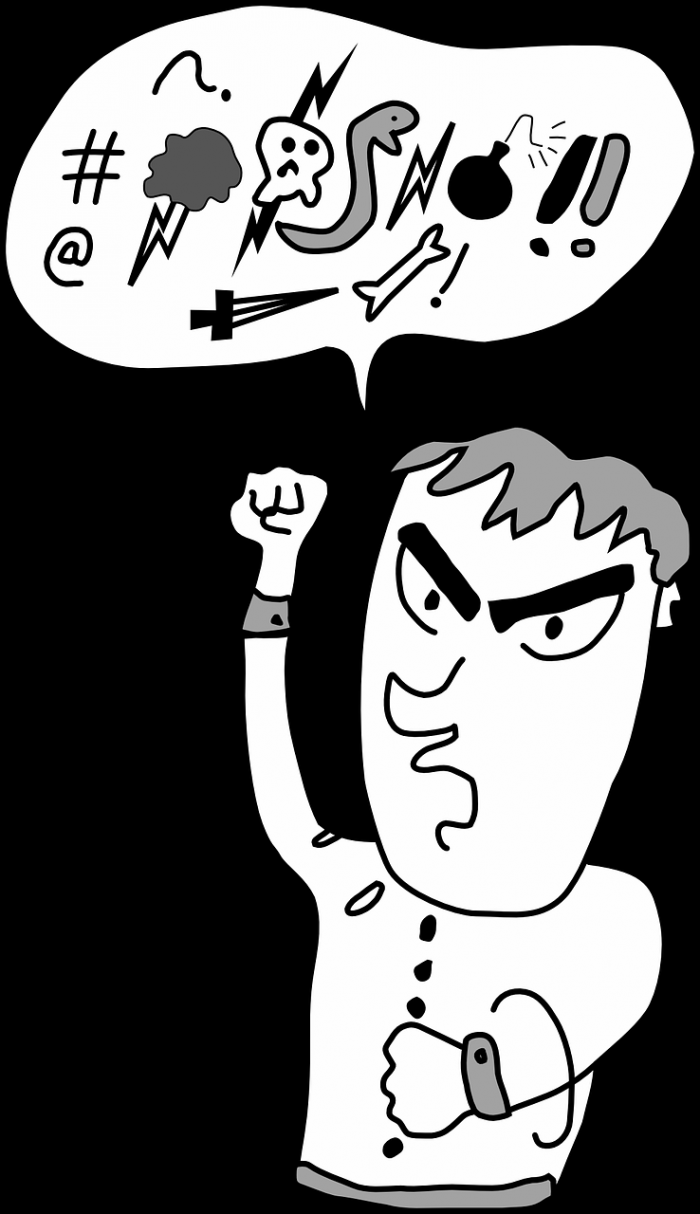The Daubert Standard – Decoding Incompetence and Corruption in Family Court
Institute for Child Custody Advocacy • May 19, 2022
The Current Situation
Mental health providers perform one of three primary roles in Family Law: co-parenting therapist, reunification counselor, and child custody evaluator.
Co-parenting therapists and reunification counselors work with parents and children to foster healthy dynamics. The child custody evaluator’s role is different in that their sole purpose is to assist the Judge in deciding child custody outcomes.
In most states, family court judges receive limited mental health or psychology training. Consequently, the Court’s designated mental health professional—the Child Custody Evaluator—becomes the default arbiter.
Thus, the Daubert Standard is used to disqualify inaccurate or demonstrably biased custody evaluators.
The Daubert Standard
Though not commonly used in family court, the Daubert Standard can be used to examine whether a custody evaluator’s conclusions were derived from a scientifically sound methodology, as required under the Ethical Standards of Psychologists.
The Daubert Standard also offers the flexibility to uncover corrupt behavior. Allowing child custody evaluators to receive compensation from one parent for separate “roles” within the same case encourages, enables, and promotes corruption within the Court.
To distinguish between the two, Incompetence can be characterized as unintentional mistakes, while corruption manifests when so-called mistakes favor one party in a case that is paying for the child custody evaluator.
Moreover, the LA Appeals Court, Main vs Main, disqualified a child custody evaluator who held more than one role in a case. The evaluator acted as the co-parenting coordinator and delayed the child custody process. These created conflicts of interest that allowed for unethical ex-parte conversations and biases against the other parent.
All Judges are elected to be their Court’s custodian of justice. Yet, many Judges hesitate to rule against the child custody evaluator, so the Daubert Standard offers a narrow pathway to examine the work of child custody evaluators in the midst of a case.
However, the Institute for Child Custody Advocacy is supporting House Bill 272 by Louisiana State Representative Patrick Jefferson which addresses ex-parte conversations and certain existing relationships between the parties; however, we think specific parental rights protections are needed. A safeguard amendment which would protect families by removing disqualified custody evaluators and requiring adherence to the already approved Child Custody Evaluation Guidelines established by the Louisiana State Board of Social Work Examiners.
HB272 with a safeguard amendment gives parents another option to help protect the parent-child bond from an incompetent or corrupt child custody evaluator before getting too deep into their respective cases.
After all, protecting the parent-child bond is the court’s mandate. cited https://www.childcustodyadvocacy.org/the-daubert-standard-decoding-incompetence-and-corruption-in-family-court
THE DAUBERT STANDARD IS CRUCIAL FOR SUCCESSFUL LITIGATION SUPPORT
The Daubert standard provides a rule of evidence regarding the admissibility of expert witness testimony during a United States federal legal proceeding. The rule of evidence, also known as the law of evidence, covers the principles that govern the proof of facts in a case. Evidence is broken into three smaller measurements to determine proof during litigation: the amount, quality and type. The Daubert standard refers to the quality of proof given in testimony from an expert witness.
An expert witness is granted expertise by way of education, training, certification, skills or experience. This person is then to have an expert opinion who can deliver expert evidence in IP litigation based on that expertise. In intellectual property cases, experts are frequently brought in to determine the level of similarity between a claimed invention and certain allegedly infringing products or standards.
There are testifying and non-testifying experts. The difference between the two depends upon the need for them to testify in court. A non-testifying expert provides their expertise as a consultant to the attorneys and can even help cross-examine other witnesses. The opposing council may examine the background of the testifying expert and subsequently object to her/his assignment to the case, something that a consulting expert is protected against. Moreover, unlike a consulting expert, a testifying expert produces an expert report and may testify in court, for which she/he will be deposed/cross-examined by the opposing council so make sure you are strategically choosing a patent expert witness. A testifying expert may also be required to share with them all notes made on documents regarding evidence with. It is important to create a strategy that will support your IP case and protect your expert consultant most effectively.
Understanding Scientific Evidence Through the Frye Test
Scientific evidence can only be derived from scientific knowledge or techniques. In Frye v. United States (1923), a new method of scientific evidence known as the Frye Test was created. It was determined that admissible scientific evidence must be a result of a theory that had “general acceptance” in the scientific community.
The judges in Frye v. United States outlined the Frye test as, “just when a scientific principle or discovery crosses the line between experimental and demonstrable stages is difficult to define. Somewhere in this twilight zone the evidential force of the principle must be recognized, and while courts will go a long way in admitting expert testimony deduced from a well-recognized scientific principle or discovery, the thing from which the deduction is made must be sufficiently established to have gained general acceptance in the particular field in which it belongs.”
Scientific Evidence Rules Get More Sophisticated With Daubert Test
70 years later, Daubert v. Merrell Dow Pharmaceuticals challenged the Frye test’s assumptions and the Daubert test became the preferred method of determining evidence in all federal, and more than half of US state, scientific cases. There are three cases that combine to make the Daubert trilogy. The two additional cases that further define the Daubert standard are: General Electric Co. v. Joiner and Kumho Tire Co. v. Carmichael.
General Electric Co. v. Joiner determined that a judge may exclude expert testimony when there are gaps between the evidence relied on by an expert and his conclusion, and that an abuse-of-discretion standard of reviews should be used in reviewing whether expert testimony should be admitted.
Kumho Tire Co. v. Carmichael determined that the judge’s gatekeeping function identified in Daubert applies to all expert testimony, even that which is non-scientific. According to Paul Rothstein, in Bloomberg Law, “judges do not feel competent to decide what is good science, as Daubert commands them to do.” His argument is that this is why the remaining US states have not agreed to Daubert standards.
The first thing that must be shown in the Duabert test is whether or not the theory in question is testable and has been tested. The theory must be peer-reviewed to reduce chances of error. The reliability and error rate must be shown to determine the level of certainty. Finally, the extent of general acceptance for the theory by the scientific community must be made clear.
A Daubert motion is a request made for the judge to exclude certain testimony. This motion is made outside the presence of the jury in order to keep them from being swayed by unqualified evidence.
Preparing for Litigation That Includes Expert Testimony
It is important to prepare for a Daubert motion in any case that is going to require expert testimony. The time for a motion is very early – well before there is actually a trial date. Hence, one needs to quickly learn how the expert opinion may be challenged and prepare for a fight as to whether the testimony will be allowed at all.
The primary purpose of the Daubert motion was to allow evidence into court, not to restrict it. In How to Survive Daubert in Nine Easy Lessons: Safely Exploring the Wilds of Expert Evidence, Ladd A. Hirsch points out that the burden of proof is actually on the party that is offering the expert testimony. This is an important challenge in intellectual property law that must not be overlooked. It is contrary to some people’s thoughts regarding the burden of proof because they feel like the expert should be admissible in court unless proven otherwise. Some have learned the hard way that this is not the case.
During the Daubert hearing, the expert in question is not required to testify. Ideally the counsel will try to find out if the judge expects to hear from the witness. Depending upon the answer, a decision will be made weighing the pros and cons of bringing in the expert during the hearing. If the expert is present, they can answer questions regarding their expertise as a form of proof. However, they are subject to cross-examination and their credibility can be diminished.
For deeply sophisticated intellectual property cases, having experts to support findings is crucial. The process of sourcing, interviewing, and presenting an expert witness can be a difficult task for many. GHB Intellect provides litigation support in a broad range of cases related to intellectual property law at GHB Intellect, we have a group of highly-respected experts who are experienced in litigation support and familiar with the Daubert standard. This knowledge increases the chances that litigation counsel will be successful in allowing the evidence to be heard by the court in the first place. cited https://ghbintellect.com/daubert-standard/
In Hallmark v. Eldridge, the Nevada Supreme Court reaffirmed that Nevada had not adopted the standards for credentialing expert witnesses found in Daubert v. Merrell Dow Pharmaceuticals, Inc. (“Daubert”), but could be influenced by its logic. Although Nevada’s statute governing the admissibility of expert evidence in its courts closely tracks its federal counterpart, the similarities between the two are not binding. Despite the similarity between these statutes, the Nevada Supreme Court has endeavored to maintain its independence in interpreting the Nevada statute, and avoid it being swallowed whole by the body of federal jurisprudence interpreting—and extending—Daubert.
Nevada law allows its courts to act as gatekeepers in admitting expert testimony. First, an expert must be qualified to testify in an expert capacity—testimony that is based on qualifications or experience in an area of specific, technical or other specialized knowledge. In making this determination, the Hallmark court directed courts to consider the following factors:
1) the witness’ formal schooling and academic degrees;
2) licensure, where appropriate;
3) employment experience; and,
4) practical experience and specialized training.
Based on these qualifications, the court determines whether or not a witness may testify as an expert. If the court determines that he or she is not qualified, then expert testimony is not allowed—he or she can only testify to the information known firsthand, without drawing conclusions based on specialized training or qualifications. Even if the witness is allowed to testify as an expert, though, it is not the end of the court’s oversight of his or her testimony.
Based on their special qualifications, expert witnesses render their opinions (appropriately known as “expert opinions”) about the facts and circumstances underlying a case. These opinions, however, must be relevant to the case and based on reliable methodology. Normally, both sides in a lawsuit hire separate experts to pick apart the other’s conclusions, explaining why they are inaccurate or flawed. This battle of the experts presupposes that their opinions are admissible, though. Where expert testimony is so flawed as to its methodology—or not based on recognized methodology at all—the court can exclude it.
The Hallmark court provided specific factors for courts to consider when making these determinations. When evaluating an expert opinion based on a specific methodology, the court should analyze its reliability based on whether:
1) it is within a recognized field of expertise;
2) its method is testable and has been tested;
3) it is published and subjected to peer review;
4) it is generally accepted within the scientific community; and,
5) it is based more on particularized facts than assumptions, conjecture, or generalizations.
Similarly, the Hallmark court cautioned that where expert opinions are based on the results of a technique, experiment or calculation, the court should delve into four non-exhaustive factors when determining its admissibility, including whether:
1) the technique, experiment, or calculation was controlled by known standards;
2) the testing conditions were similar to the conditions at the time of the incident;
3) the technique, experiment, or calculation had a known error rate; and,
4) it was developed by the proffered expert for the purposes of that lawsuit.
In the Hallmark case, the Nevada Supreme Court was confronted with the specific question of whether inclusion of the defense biomechanical expert’s testimony created reversible error, requiring a new trial. A trial court’s determinations about the admissibility of evidence are reviewed by appellate courts for abuse of discretion, giving the trial court wide berth to manage the proceedings before it. Not all errors require reversal of the trial court’s decisions, though. For reversal to be appropriate, the appellate court must find the evidentiary ruling caused prejudice to the appealing party: “that, but for the error[s], a different result might reasonably have been expected.”
The Nevada Supreme Court found that the trial court overstepped its discretion in the Hallmark case on numerous bases. While the expert witness properly was allowed to testify qua expert, the defense failed to produce evidence that the expert opinions could be replicated or tested; did not have experience relevant to the damages in the case; and were formed without knowing the underlying facts needed to make sound calculations. Additionally, the lack of evidence about how the expert’s testing was conducted, and whether it was reliable and replicable, doomed the expert’s testimony to inadmissibility on appeal. In short, there was no foundation in the record to support why the purported expert testimony was more valuable than lay opinion based on the experiences and expectations of a person with no specialized training or expertise.
As is often the case in Nevada, though, the Supreme Court recently issued further guidance in applying the Hallmark decision. In March 2016, the Nevada Supreme Court rendered its opinion in Rish v. Simao that rolled back an over-reliance on Hallmark in certain cases. Specifically, the Nevada Supreme Court’s Rish decision cautioned that while the biomechanical opinions offered in Hallmark were inadmissible, that did not mean that biomechanical opinions were universally invalid. Instead, the issues in Hallmark arose largely from inadequate foundation and being “based more on supposition than science.” Despite the Hallmark decision finding that certain evidence in that case was erroneously admitted, the Supreme Court’s Rish decision specifically cautioned that testimony is “not necessarily precluded in every case.”
Taken together, the Hallmark and Rish decisions offer critical guidance—and re-affirmation of its importance—in qualifying experts and their opinions in trial. Nevada still is not a Daubert jurisdiction, but the invisible hand of that decision and its progeny can be felt molding the State’s jurisprudence on expert testimony. By properly documenting an expert’s credentials and opinions, they stand a better chance of being properly admitted, and avoiding the delay and cost of a mulligan if their inclusion creates reversible error on appeal. cited https://www.vegaslegalmagazine.com/daubert-not-daubert/
To Learn More…. Read MORE Below and click the links
Learn More About True Threats Here below….
We also have the The Brandenburg v. Ohio (1969) – 1st Amendment
CURRENT TEST = We also have the The ‘Brandenburg test’ for incitement to violence – 1st Amendment
We also have the The Incitement to Imminent Lawless Action Test – 1st Amendment
We also have the True Threats – Virginia v. Black is most comprehensive Supreme Court definition – 1st Amendment
We also have the Watts v. United States – True Threat Test – 1st Amendment
We also have the Clear and Present Danger Test – 1st Amendment
We also have the Gravity of the Evil Test – 1st Amendment
We also have the Elonis v. United States (2015) – Threats – 1st Amendment
Learn More About What is Obscene….
We also have the Miller v. California – 3 Prong Obscenity Test (Miller Test) – 1st Amendment
We also have the Obscenity and Pornography – 1st Amendment
Learn More About Police, The Government Officials and You….
We also have the Brayshaw v. City of Tallahassee – 1st Amendment – Posting Police Address
We also have the Publius v. Boyer-Vine –1st Amendment – Posting Police Address
We also have the Lozman v. City of Riviera Beach, Florida (2018) – 1st Amendment – Retaliatory Police Arrests
We also have the Nieves v. Bartlett (2019) – 1st Amendment – Retaliatory Police Arrests
We also have the Freedom of the Press – Flyers, Newspaper, Leaflets, Peaceful Assembly – 1st Amendment
We also have the Insulting letters to politician’s home are constitutionally protected, unless they are ‘true threats’ – 1st Amendment
We also have the Introducing TEXT & EMAIL Digital Evidence in California Courts – 1st Amendment
We also have the First Amendment Encyclopedia very comprehensive – 1st Amendment
ARE PEOPLE LYING ON YOU? CAN YOU PROVE IT? IF YES…. THEN YOU ARE IN LUCK!
We also have the Penal Code 118 PC – California Penalty of “Perjury” Law
We also have the Federal Perjury – Definition by Law
We also have the Penal Code 132 PC – Offering False Evidence
We also have the Penal Code 134 PC – Preparing False Evidence
We also have the Penal Code 118.1 PC – Police Officers Filing False Reports
We also have the Spencer v. Peters – Police Fabrication of Evidence – 14th Amendment
We also have the Penal Code 148.5 PC – Making a False Police Report in California
We also have the Penal Code 115 PC – Filing a False Document in California
Know Your Rights Click Here (must read!)
Under 42 U.S.C. $ection 1983 – Recoverable Damage$
42 U.S. Code § 1983 – Civil Action for Deprivation of Right$
$ection 1983 Lawsuit – How to Bring a Civil Rights Claim
18 U.S. Code § 242 – Deprivation of Right$ Under Color of Law
18 U.S. Code § 241 – Conspiracy against Right$
$uing for Misconduct – Know More of Your Right$
Police Misconduct in California – How to Bring a Lawsuit
New Supreme Court Ruling – makes it easier to sue police
RELATIONSHIP WITH YOUR CHILDREN & YOUR CONSTITUIONAL RIGHT$ + RULING$
YOU CANNOT GET BACK TIME BUT YOU CAN HIT THOSE PUNKS WHERE THEY WILL FEEL YOU = THEIR BANK
We also have the 9.3 Section 1983 Claim Against Defendant as (Individuals) — 14th Amendment this CODE PROTECTS all US CITIZENS
We also have the Amdt5.4.5.6.2 – Parental and Children’s Rights 5th Amendment this CODE PROTECTS all US CITIZENS
We also have the 9.32 – Interference with Parent / Child Relationship – 14th Amendment this CODE PROTECTS all US CITIZENS
We also have the PARENTS RIGHTS SCOTUS RULINGS & HELP HERE for 14th Amendment PARENTS RIGHTS Help!
California Civil Code Section 52.1 Interference with exercise or enjoyment of individual rights
Contesting / Appeal an Order / Judgment / Charge
Options to Appealing – Fighting A Judgment Without Filing An Appeal Settlement Or Mediation
Cal. Code Civ. Proc. § 1008 Motion to Reconsider
Penal Code 1385 – Dismissal of the Action for Want of Prosecution or Otherwise
Penal Code 1538.5 – Motion To Suppress Evidence in a California Criminal Case
CACI No. 1501 – Wrongful Use of Civil Proceedings
Penal Code “995 Motions” in California – Motion to Dismiss
WIC § 700.1 – If Court Grants Motion to Suppress as Evidence



